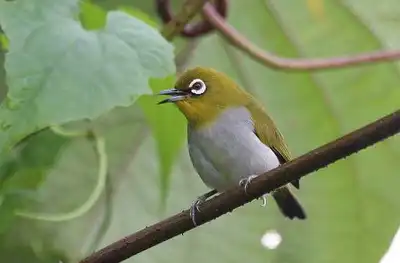Kacamata Enggano (Zosterops salvadorii): The Endemic Bird of Enggano Island
Enggano Island, located in the Indian Ocean off the coast of Sumatra, is home to a unique and diverse range of flora and fauna. Among its many treasures is the Enggano White-eye, scientifically known as Zosterops salvadorii but more commonly referred to as the Kacamata Enggano.
The Kacamata Enggano is a small passerine bird that belongs to the white-eye family. It is endemic to Enggano Island, meaning it is found nowhere else in the world. This makes it a truly special and remarkable species, deserving of our attention and conservation efforts.
Physical Characteristics
The Kacamata Enggano is a small bird, measuring around 11 centimeters in length. It has a distinctive appearance, with a bright yellow throat, chest, and belly, contrasting against its olive-green upperparts. Its most striking feature is the white eye-ring that encircles its dark eyes, giving it the name “white-eye.”
Like other white-eye species, the Kacamata Enggano has a short, stout bill, ideal for feeding on nectar, fruits, and insects. It also possesses a melodious song, which can often be heard echoing through the forests of Enggano Island.
Habitat and Behavior
The Kacamata Enggano is primarily found in the lowland rainforests of Enggano Island. It prefers dense vegetation, including primary and secondary forests, as well as disturbed areas with thick undergrowth. These habitats provide the bird with ample food sources and suitable nesting sites.
As a social bird, the Kacamata Enggano is often seen in small groups or mixed-species flocks. It is highly active and agile, flitting between branches and foliage in search of food. Its diet consists of nectar, fruits, insects, and small invertebrates.
During the breeding season, which typically occurs from September to February, the Kacamata Enggano builds a cup-shaped nest using twigs, leaves, and moss. The female usually lays two to three eggs, which are incubated by both parents. Once hatched, the chicks are fed a diet of insects and other small invertebrates until they fledge.
Conservation Status and Threats
Despite its limited range, the Kacamata Enggano is currently listed as a species of least concern on the IUCN Red List. However, its population size and trends are unknown, and further research is needed to assess its conservation status accurately.
Enggano Island, like many other remote islands, faces various threats to its unique biodiversity. Deforestation, habitat degradation, and invasive species pose significant challenges to the survival of the Kacamata Enggano and other endemic species. Conservation efforts, including habitat protection and restoration, are crucial for the long-term survival of this remarkable bird.
Ecotourism and Conservation Awareness
Enggano Island has the potential to become a hotspot for ecotourism, attracting birdwatchers and nature enthusiasts from around the world. By promoting responsible and sustainable tourism practices, the local community can benefit economically while simultaneously raising awareness about the importance of conserving the island’s unique biodiversity.
Efforts should be made to educate both locals and visitors about the Kacamata Enggano and the need to protect its habitat. This can be done through guided tours, interpretive signage, and community-led conservation initiatives. By involving the community in conservation efforts, we can ensure the long-term survival of this endemic bird and its fragile ecosystem.
Conclusion
The Kacamata Enggano, or Enggano White-eye, is a remarkable bird that symbolizes the unique biodiversity found on Enggano Island. As an endemic species, it holds immense ecological and conservation value. By understanding its habitat requirements, raising awareness, and implementing sustainable practices, we can contribute to the preservation of this beautiful bird and the irreplaceable natural heritage of Enggano Island.
